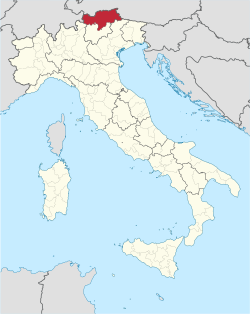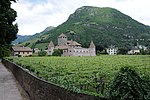Franciscan Friary, Bolzano

The Franciscan Friary, Bolzano (German: Franziskanerkloster, Bozen; Italian: Convento dei Francescani, Bolzano) is a Franciscan friary in the city of Bolzano, in South Tyrol, northern Italy. It was founded in 1221, less than a century after Bolzano was refounded as a trading centre on the important Brenner route connecting the March of Verona and Italy with the Holy Roman Empire north of The Alps.The friary is located in Bolzano's central Boden-Rentsch quarter. The friary and its church are home to some important frescoes and other art works. Although Bolzano has been an Italian city since 1919, its Franciscan friary has since 2007 been part of the Franciscan Order of Austria for historical reasons.
Excerpt from the Wikipedia article Franciscan Friary, Bolzano (License: CC BY-SA 3.0, Authors, Images).Franciscan Friary, Bolzano
Via dei Francescani - Franziskanergasse, Bolzano - Bozen Centro Storico - Altstadt
Geographical coordinates (GPS) Address External links Nearby Places Show on map
Geographical coordinates (GPS)
| Latitude | Longitude |
|---|---|
| N 46.500725 ° | E 11.354175 ° |
Address
Chiesa dei Francescani - Franziskanerkirche
Via dei Francescani - Franziskanergasse
39100 Bolzano - Bozen, Centro Storico - Altstadt
Trentino-Alto Adige/Südtirol, Italy
Open on Google Maps











